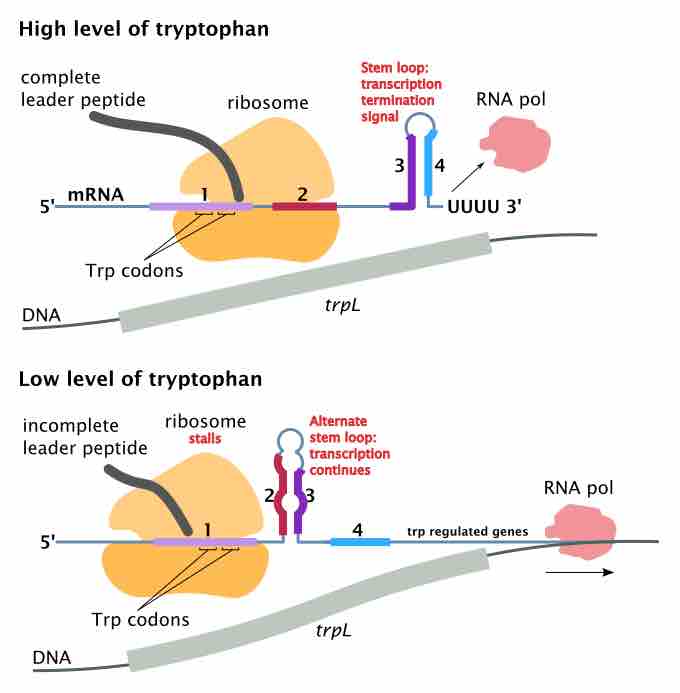Attenuation is a regulatory mechanism used in bacterial operons to ensure proper transcription and translation. In bacteria, transcription and translation are capable of proceeding simultaneously. The need to prevent unregulated and unnecessary gene expression can be prevented by attenuation, which is characterized as a regulatory mechanism.
The process of attenuation involves the presence of a stop signal that indicates premature termination. The stop signal, referred to as the attenuator, prevents the proper function of the ribosomal complex, stopping the process. The attenuator is transcribed from the appropriate DNA sequence and its effects are dependent on the metabolic environment. In times of need, the attenuator within the mRNA sequence will be bypassed by the ribosome and proper translation will occur. However, if there is not a need for a mRNA molecule to be translated but the process was simultaneously initiated, the attenuator will prevent further transcription and cause a premature termination. Hence, attenuators can function in either transcription-attenuation or translation-attenuation.
Transcription-attenuation is characterized by the presence of 5'-cis acting regulatory regions that fold into alternative RNA structures which can terminate transcription. These RNA structures dictate whether transcription will proceed successfully or be terminated early, specifically, by causing transcription-attenuation. The result is a misfolded RNA structure where the Rho-independent terminator disrupts transcription and produced a non-functional RNA product. This characterizes the mechanisms of transcription-attenuation. The other RNA structure produced will be an anti-terminator that allows transcription to proceed .

Attenuation of the Tryptophan Operon
An example of attenuation is the tryptophan operon. This schematic represents transcriptional-attenuation as the formation of mRNA stem-loops prevents the continuance of transcription based on the levels of tryptophan in the metabolic environment.
Translation-attenuation is characterized by the sequestration of the Shine-Dalgarno sequence. The Shine-Dalgarno sequence is a bacterial specific sequence that indicates the site for ribosomal binding to allow for proper translation to occur. However, in translation-attenuation, the attenuation mechanism results in the Shine-Dalgarno sequence forming as a hairpin-loop structure. The formation of this hairpin-loop structure results in the inability of the ribosomal complexes to form and proceed with proper translation. Hence, this specific process is referred to as translation-attenuation.